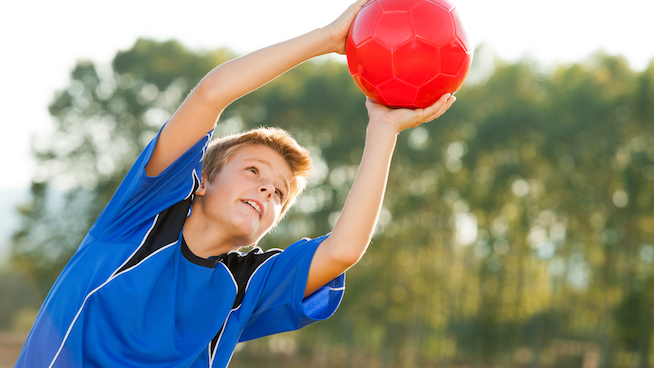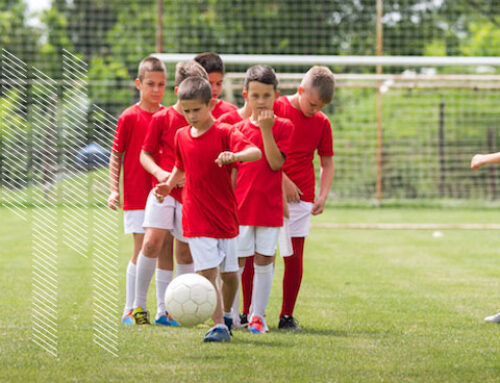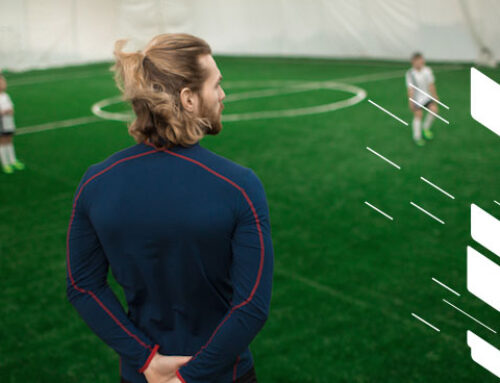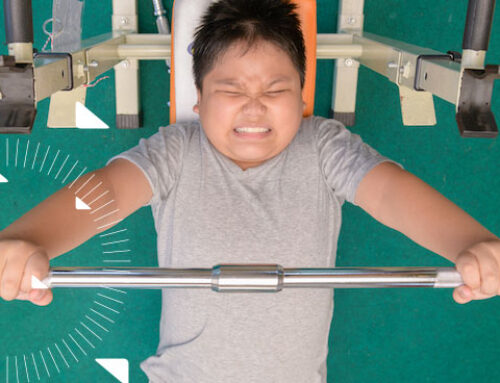By Brandon Hall
Believe your kid is a great athlete?
See if they can do these three things:
- Catch and throw a ball with both hands
- Do a somersault
- Run backwards
Allow them time to attempt all three. There’s no benchmark to hit here, but it’ll soon be obvious whether they’re capable of picking up the task or not.
According to Chris Schwarz, head strength and conditioning coach for the Ottawa Senators, many of today’s young athletes will find themselves flummoxed by one or more of these rudimentary movements. While it’s to be expected that those in early childhood (roughly 3 to 8 years old) may have some trouble with these tasks, Schwarz is finding many athletes in their mid-to-late teens can’t pull them off. Therein lies the problem.
Young athletes are bigger, stronger and faster than ever before. But are they actually better at their sport than the generations who came before? Schwarz isn’t so sure. He’s been training young athletes for over two decades. In addition to his NHL gig, he owns Fitquest, a private training facility in Ontario whose clientele largely consists of amateur athletes. About 10 years ago, Schwarz noticed that while his athletes were crushing historical averages for tests like the Bench Press and the Vertical Jump, they didn’t seem any better at their sport than the kids who came before them. In fact, they were inexplicably missing out on many foundational aspects of physical literacy—stuff which, in the past, never had to be “trained.”
“We started saying, ‘Look at all these performance parameters—they’re getting better. They’re stronger, they’re more powerful, they’re blowing the tests away. But I’m not sure we’re spitting out better athletes. I’m not sure the end result is better athletes,'” Schwarz recalls. He soon began implementing “Non-Athletic Athletic Testing” with his athletes. Instead of purely evaluating metrics like Deadlift max or 40-Yard Dash, he’d also ask them to pass around a soccer ball with both feet, or to execute a somersault. To his astonishment, many kids who were marvelous athletes on paper couldn’t pull off the basics.
“(I started asking them) to do things in other sports just to see if they could do it. Can they throw with their left hand? Can they throw with their right hand? Can they catch with both hands? Can they kick with both feet? Can they roll? Can they tumble? All things that when I was an athlete, (we’d) think, ‘Yea I could that.’ And they just can’t do it,” Schwarz says. “Then you go a step further and look at specialization, and kids just don’t do (this stuff) anymore. They weren’t outside doing all these little games that we were playing, because that time was being taken up with other things.”

The issue has only intensified over the past decade. The rise of early specialization and dramatic decrease in free play is creating young athletes who pass the eye test and often dominate at early age levels, but as their size, speed and strength advantages diminish over time, have little to fall back on. Without a foundation of versatile athleticism, there’s nothing to “glue” it all together. The result is an athlete who cannot improvise, who lacks creativity, and who has trouble processing and reacting to a live sports environment swiftly. In a sport like hockey, this might manifest in a player who’s unable to snatch a puck out of mid-air or sidestep a collision at the last second.
Schwarz says the ability to adapt to new athletic demands has largely disappeared, and the more advanced the competition becomes, the more creative and decisive the solutions must be. Even if a kid has never been asked to swing a baseball bat or throw a football with their non-dominant hand, the ones with a strong base of overall athleticism can usually figure it out quickly. The brain plays a tremendous role in all this, as the greater number of practiced athletic movements one has acquired, the more available tools they have to find a solution. Not only that, but they can also access those tools with more decisiveness and less conscious thought, allowing them to devote more brain power to things like analyzing where teammates and opponents are in relation to themselves. Think of it like a computer with more RAM.
“Everything that happens (in sport) is not a dance recital. It’s not paint by numbers. Everything is a solution. So by doing the same thing over and over again, you’re never actually getting to another level of athleticism,” Schwarz says.
There’s a chance your kid has never been asked to catch a ball with their left hand or bust out a somersault on command, but if they have a solid athletic foundation, they’ll likely be able to figure it out within a few minutes of experimentation. If not, there are underlying issues at play which cannot be ignored.
About now I can hear the angry sports dad chiming in inside my head. “But my kid’s dominating their league—they have the best stats on their team! Why should they waste time with this crap?” Schwarz has a simple answer—because they can’t do it. And while they may be a star now, a lack of foundational athleticism will become an increasingly heavier dead weight on their potential with each passing day.
“Parents come in, they go, ‘My kid is 6-foot-2, 210 pounds, he’s 14. We need to get him stronger to get him ready for the next level.’ So he’s 6-foot-2, 210 pounds, he’s a defenseman, but he can’t run backwards. So do we want to spend (all our time) getting him bigger and stronger, or do we want to talk about maybe he should just run backwards for 15 to 20 minutes a day? He can’t move. The basis of sport is movement and processing,” Schwarz says. “They want to Frankenstein everything. Take this skill, take that, put them all together, and in the end he becomes a great athlete. That’s not the way it is.”
Kids today can’t be expected to take the lead on diversifying themselves athletically, which is why Schwarz’s training sessions now include a heavy dose of play. His warm-ups and circuits often include stations like hitting baseballs from both sides of the plate, catching and throwing different objects, and lawn bowling. Visits to the nearby park to play volleyball or “non-dominant baseball” are the norm. There’s still plenty of traditional strength and conditioning training, but Schwarz believes if the kids don’t get a greater breadth of athletic exposure with him, there’s little chance they’ll find it elsewhere.
Today’s kids likely play only one or two sports, and they spend almost all their free time devoted to travel teams and skills training for that. Recess and P.E. classes have either been cut from schools completely or are now so restricted and watered down that they’re of little use. Pick-up games have died because parents either fear for their children’s safety or there’s simply no time for them amidst all the structured sports activities.
“We have to take control of it…You’re either going to be part of the solution or part of the problem,” Schwarz says. “If you have the kids for 75 minutes, can you give up 15 minutes to allow them to bounce a ping-pong ball on a racket? Get 10 ping-pong rackets, get them to try to hit short (bounces), then high. Get a kid to stand on one foot and do it. I know it seems so simple, but they can’t do it. Yet you’re trying to get them to hit perfect strokes in tennis. We’re trying to round third and we haven’t even gotten to first on most of the fundamentals.”
Early specialization becoming the status quo has also created a generation which experiences very little failure. Kids stick to the one sport they’re good at, and they’ve been a standout in it as long as they can remember. When asked to do something athletic that they’re not comfortable with or immediately good at, they simply don’t know how to handle it. It’s one reason why figures like Notre Dame women’s head basketball coach Muffet McGraw have pointed out a declining amount of resiliency in young athletes.
“The other whole aspect of this is the kid who crushes everybody in hockey but won’t play badminton and is no good at badminton. It’s probably OK that he gets beat. There’s learning in getting beat,” Schwarz says. “The competitiveness that he’s hopefully going to have if he wants to be an elite athlete (could be ignited).”
Photo Credit: Dangubic/iStock, Gradyreese/iStock, Grandriver/iStock
READ MORE:







Leave A Comment
You must be logged in to post a comment.